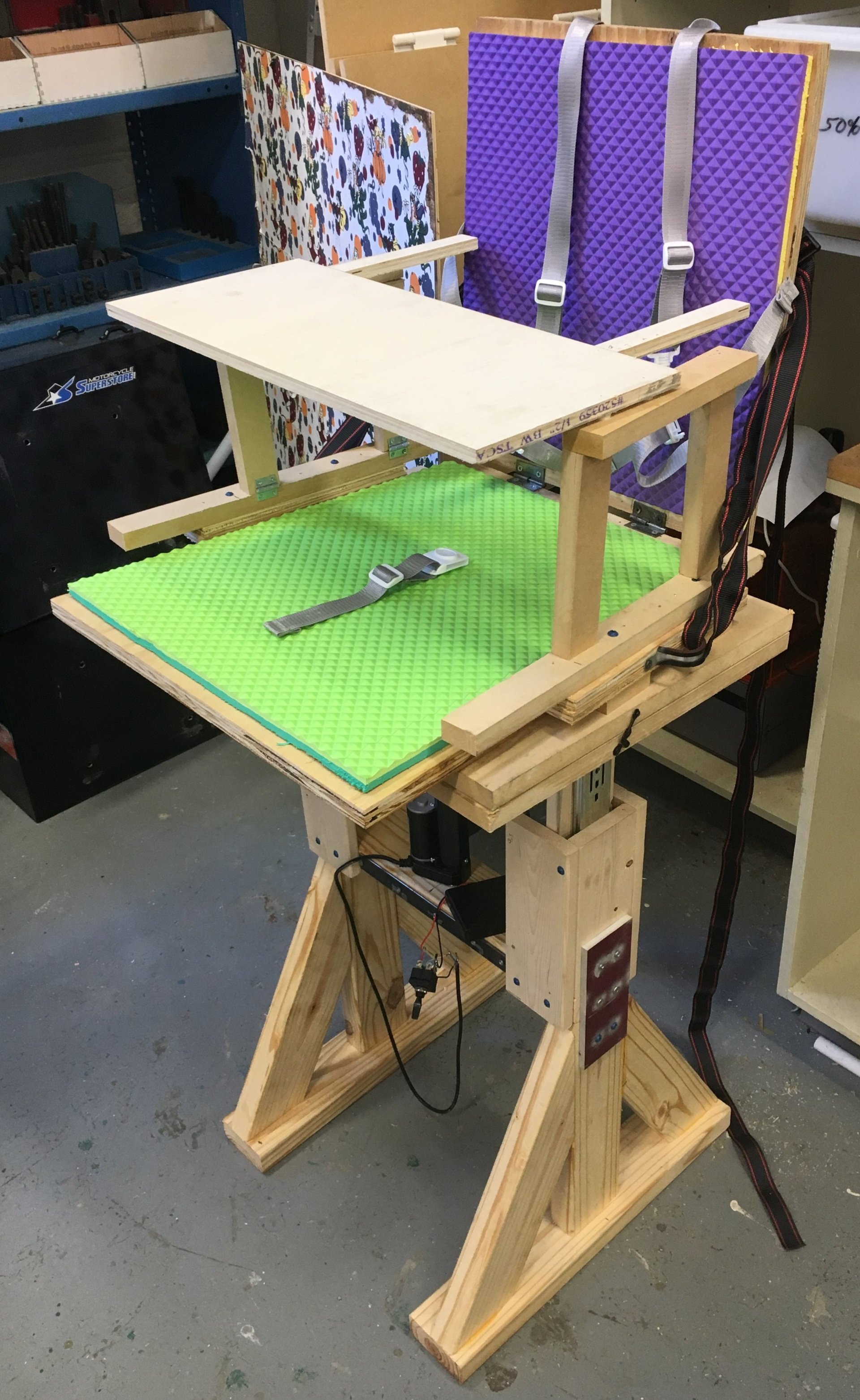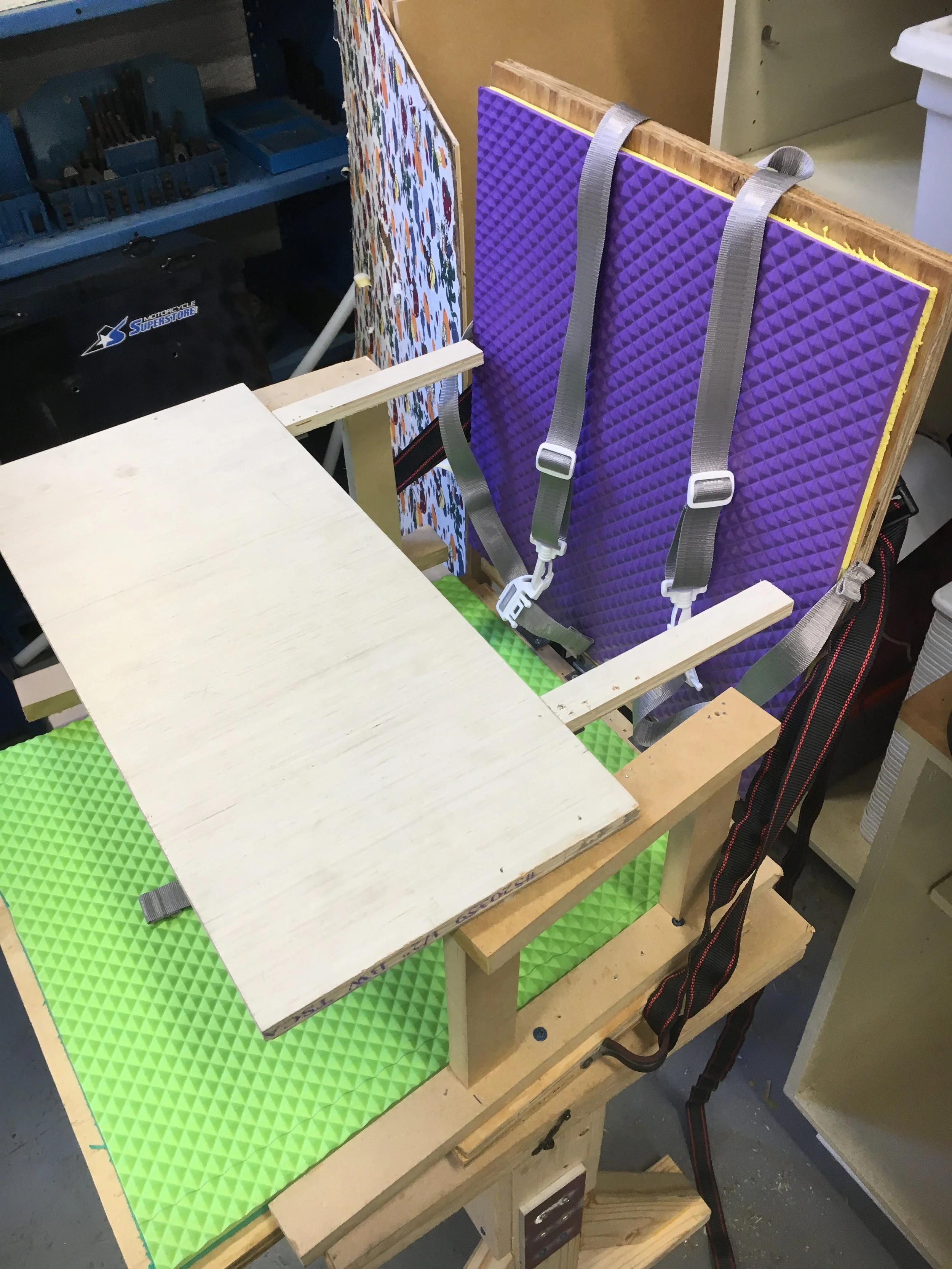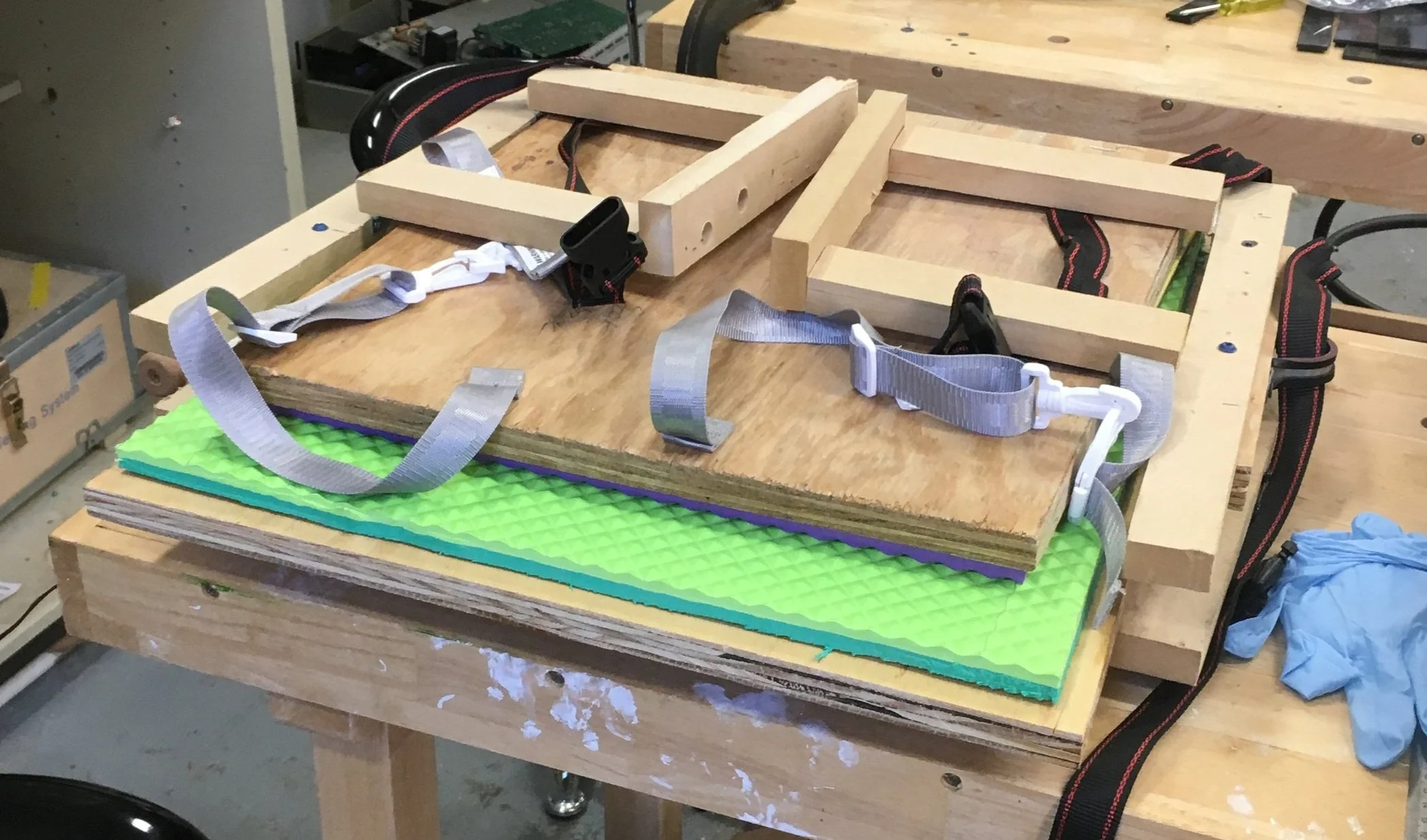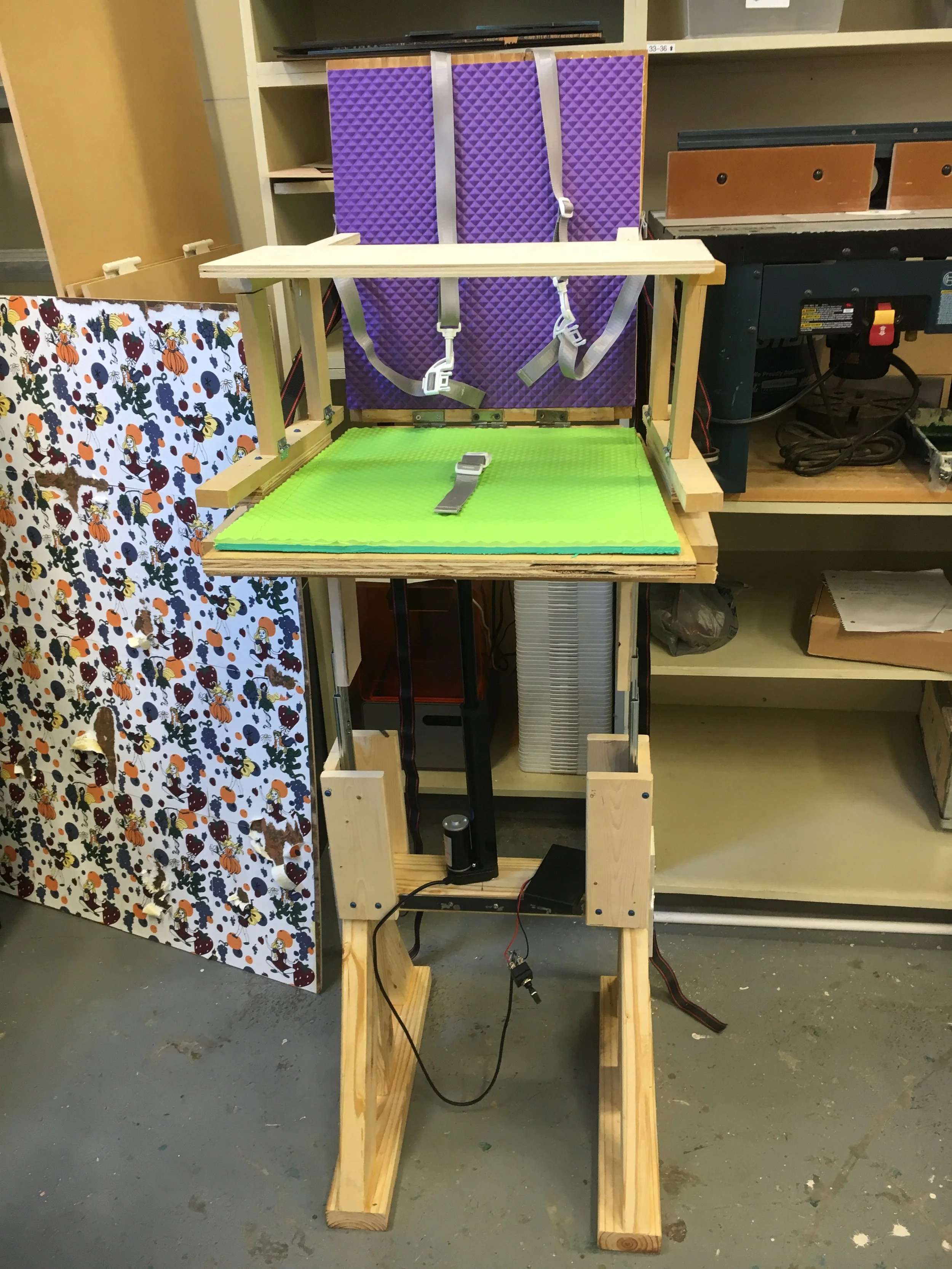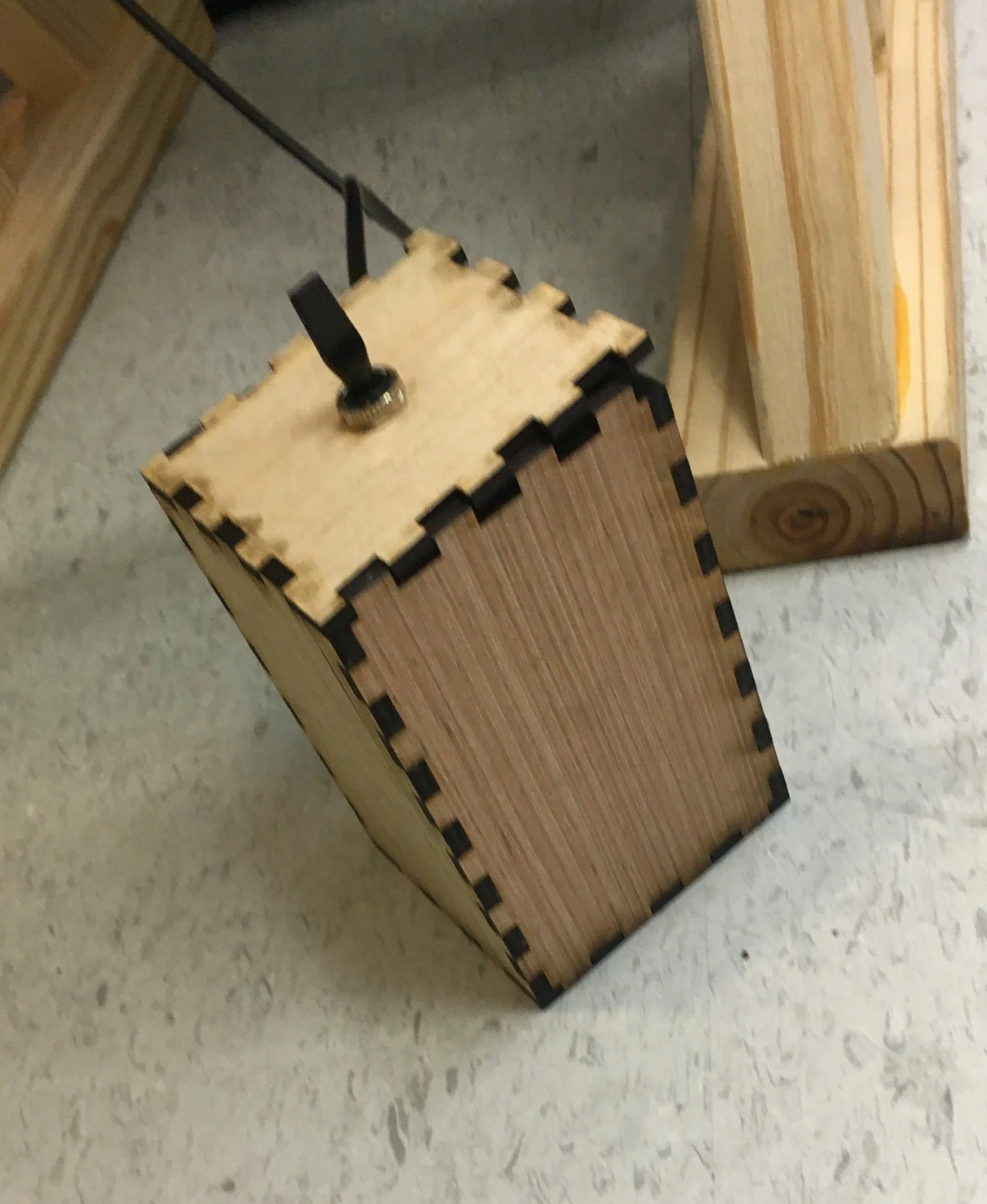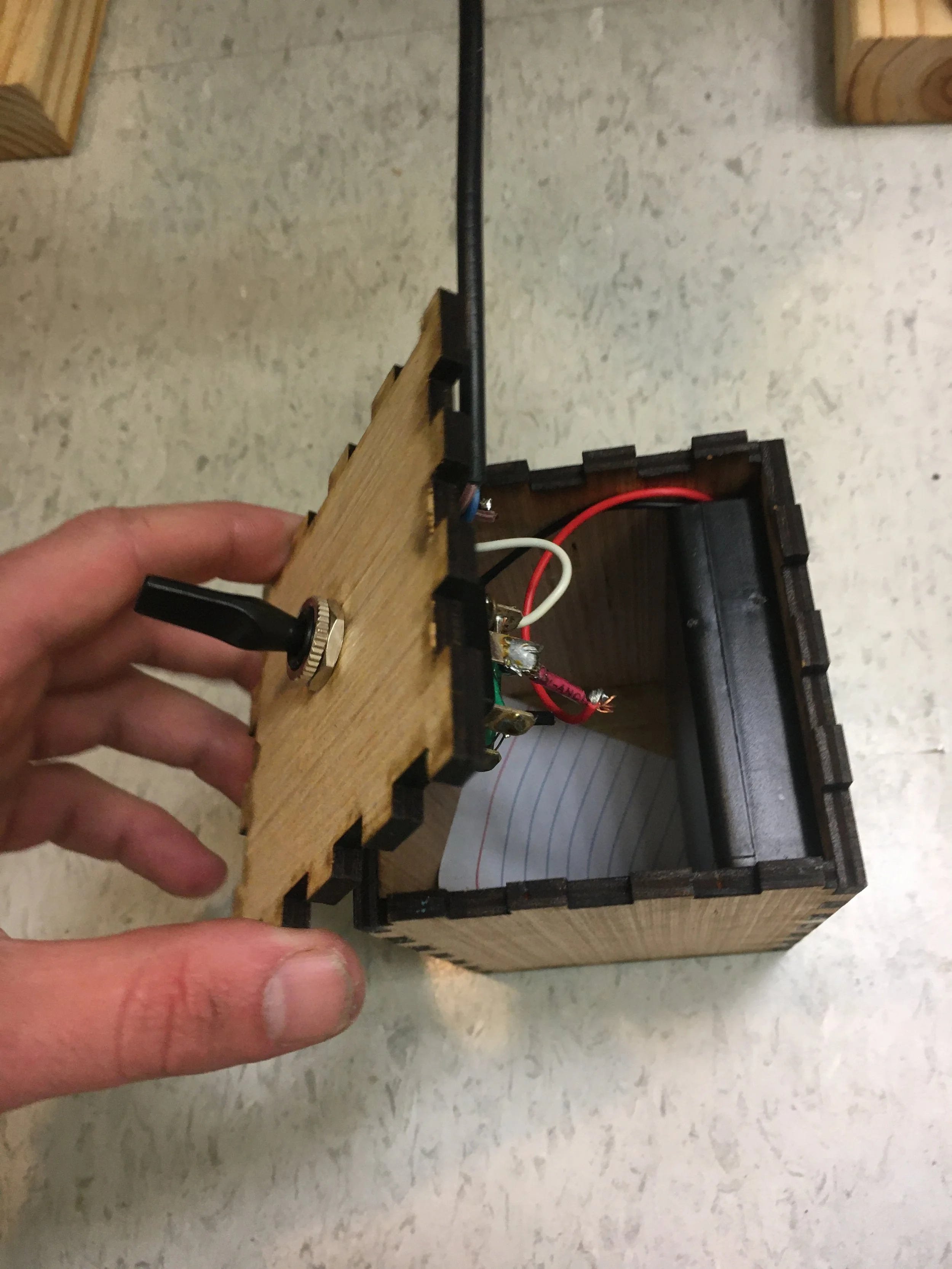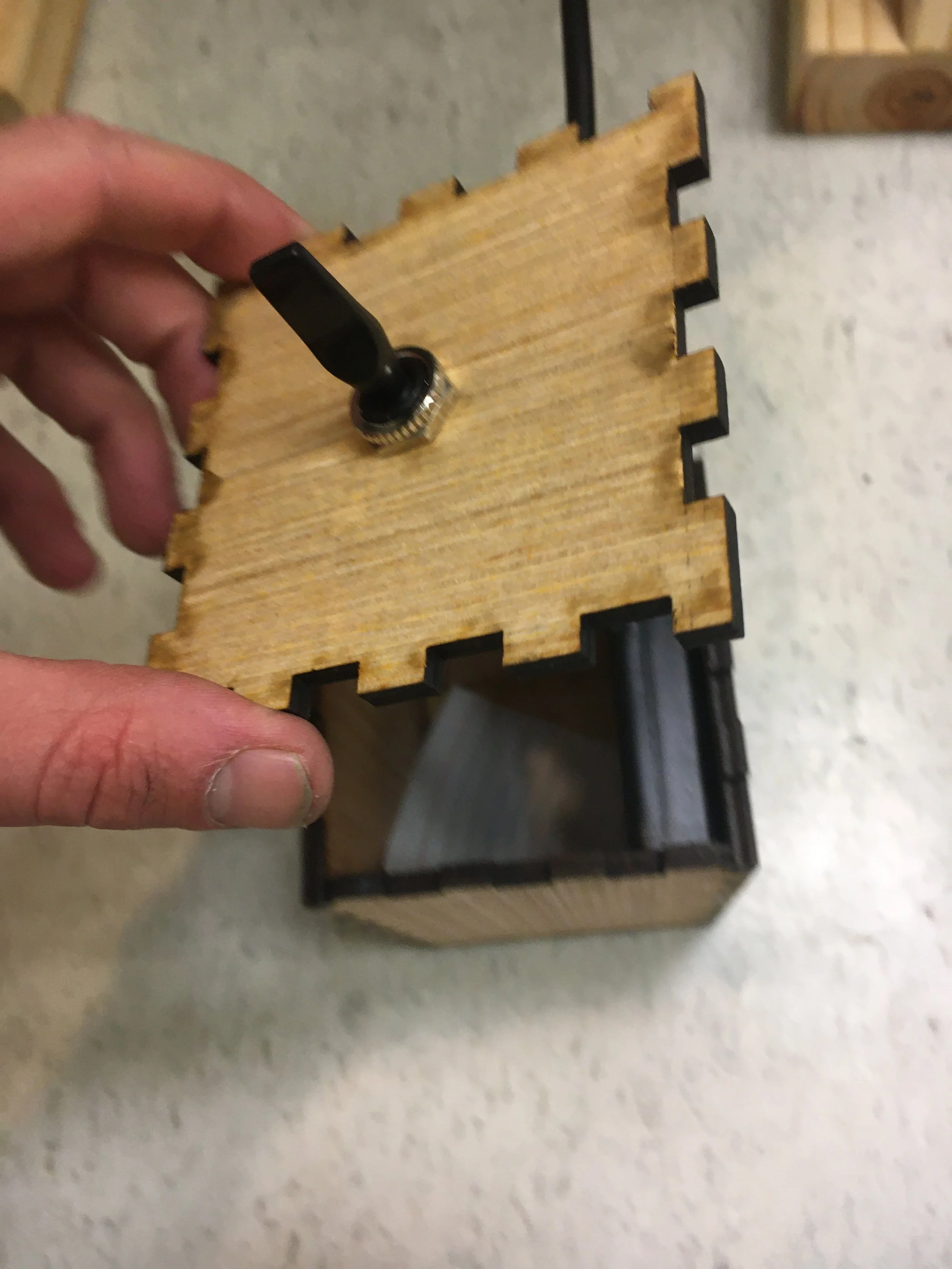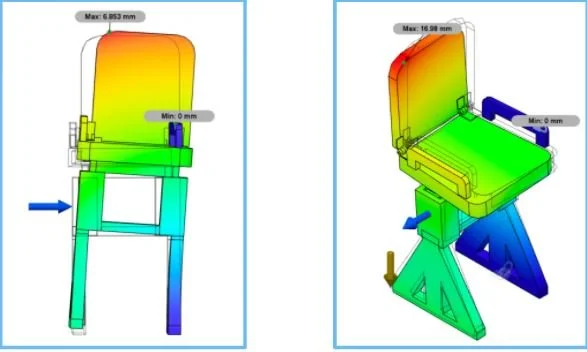Grand Challenges in Biomedical Engineering: Crescent Chair
Grand Challenges in Biomedical Engineering is a class I took at Tulane University. In this class, we had to identify and research a medical problem and design and prototype a device in order to solve this problem. The problem we chose to solve was that children with developmental hip dysplasia, specifically those wearing spica casts, have trouble using normal high-chairs. My team and I designed a high chair that was spica-cast compatible. This chair was easy to disassemble/reassemble for easy transport, stable, and had adjustable height to match with tables of different heights. The chair also had a removable tray to make eating easy while still making it easy to put the child into and out of the chair. My team consisted of Shanna Fischzang, Cam Galic, Chandler Harris, Sydney Seigmeister, Gabbi Sherer, and myself. This project was done from January 2019- January 2020.
The final model of our adjustable, collapsible, high-chair
The Top of the Chair
This is a view of the part of the chair where the child would sit. The chair has straps with five attachment points to ensure maximum safety for the child using it. The chair also comes equipped with a removable tray so eating is easy while also making it easy to get the child into and out of the chair. The chair itself is padded to ensure the child’s comfort. You can see the small hook in the bottom middle of the image that is the fastening mechanism of this top part of the chair onto the base.
The Top of the Chair in Collapsed Form
This is the part of the chair where the child sits in its collapsed form. Once the tray is removed, the back of the chair folds down onto the front followed by the arms folding over the back. This makes the chair take up much less space in order to allow easy transport.
The Base of the Chair
This picture includes only the base of our chair. The base includes the height-raising mechanism which involves a linear actuator and a switch. The chair piece itself where the child would sit is attached directly on top of the piece shown here with an attachment point corresponding to the hold in the middle of the top of the base.
Chair at Different Heights
-
Raised Chair
This is our chair in the raised position with the linear actuator we input fully extended
-

Lowered Chair
This is the chair at the lowest setting with the linear actuator retracted
Switch Box
This is the switch box that I designed and laser cut to house the switch that controls the linear actuator. If you push the switch up it raises the height of the chair and pushing the switch down lowers the height of the chair. In a future model, this switch would be nicely mounted onto the chair in an accessible position. All of the wires connecting the linear actuator, battery pack, and switch were soldered together by my teammate Cameron Galic and me.
Fusion 360 Simulation
We ran simulations to confirm what we suspected: that the chair would not be easily tipped over by being bumped into or actions of that sort.
